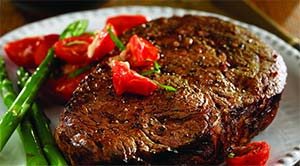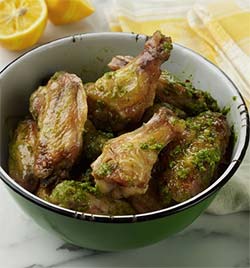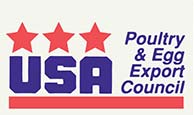 Sonny Perdue, US Secretary of Agriculture US Secretary of Agriculture Sonny Perdue has hailed the agreement between the United States and China on several key trade issues, most notably the return of American beef to the Chinese market after a ban imposed in 2004 following a case of bovine spongiform encephalopathy (mad cow disease) in Washington state.
Sonny Perdue, US Secretary of Agriculture US Secretary of Agriculture Sonny Perdue has hailed the agreement between the United States and China on several key trade issues, most notably the return of American beef to the Chinese market after a ban imposed in 2004 following a case of bovine spongiform encephalopathy (mad cow disease) in Washington state.
“This is tremendous news for the American beef industry, the agriculture community, and the US economy in general,” he said. “We will once again have access to the enormous Chinese market, with a strong and growing middle class, which had been closed to our ranchers for a long, long time. When the Chinese people taste our high-quality beef, there’s no doubt in my mind that they’ll want more of it.”
While the United States recorded a whopping $347 billion goods and services trade deficit with China last year, the PRC ranked as the top export market for US agriculture products The total sales value has increased by over 1,100% since 2000 to $21.4 billion in 2016.
The trade agreement, which stems from last month’s meeting between US President Donald Trump and Chinese President Xi Jinping in Florida, include exports of US liquefied natural gas to the PRC and the opening of credit rating and electronic payment services to American companies transacting business in China.
 While the PRC is obliged to allow US imports of beef by July 16 at the latest, the United States in turn has agreed to issue a proposed rule to allow Chinese cooked poultry to enter the American market. The USDA’s Food Safety and Inspection Service still must take a number of steps to make this happen, including publication of the proposed rule in the Federal Register. This is followed by a comment period before a final determination is made as to whether China is equivalent and thus eligible to export poultry to the United States that was slaughtered and cooked in Chinese establishments.
While the PRC is obliged to allow US imports of beef by July 16 at the latest, the United States in turn has agreed to issue a proposed rule to allow Chinese cooked poultry to enter the American market. The USDA’s Food Safety and Inspection Service still must take a number of steps to make this happen, including publication of the proposed rule in the Federal Register. This is followed by a comment period before a final determination is made as to whether China is equivalent and thus eligible to export poultry to the United States that was slaughtered and cooked in Chinese establishments.
Chicken Council Comments
National Chicken Council (NCC) President Mike Brown described the positive development on the beef front as a testament to the Trump Administration’s work to break down some of the existing obstacles that have been preventing US chicken from regaining access to the Chinese market.
 “With the announcement of US beef access to China, we encourage the administration to continue their work to remove China’s obstacles preventing US broiler access to their marketplace,” said Brown. “NCC and our members support free and fair trade. In order to be effective, free trade must operate as a two-way street. I am optimistic that as our negotiators continue the dialogue with China, US broiler access issues will be resolved expeditiously.”
“With the announcement of US beef access to China, we encourage the administration to continue their work to remove China’s obstacles preventing US broiler access to their marketplace,” said Brown. “NCC and our members support free and fair trade. In order to be effective, free trade must operate as a two-way street. I am optimistic that as our negotiators continue the dialogue with China, US broiler access issues will be resolved expeditiously.”
US chicken products have been blocked by China since January of 2015, when the country issued a blanket ban on all American poultry after avian influenza was detected in a single wild bird in the western United States. Poultry exports to China peaked in 2008, with an export value of $722 million.
Brown also said the announcement only further underscores the need for USDA to scrap its controversial “GIPSA rules” on poultry.
“In an increasingly competitive global marketplace, it makes little sense for unnecessary and burdensome regulations to be imposed on US chicken producers,” stated Brown. “We urge Secretary Perdue to rescind the GIPSA regulations on the broiler industry that will bring tremendous costs and put US broiler products at a competitive disadvantage both domestically and abroad.”
USAPEEC Weighs In
 The USA Poultry & Egg Export Council (USAPEEC) is pleased that the Trump Administration has made “substantive progress in the trade dialogue with China, and that poultry plays an integral part in that progress.”
The USA Poultry & Egg Export Council (USAPEEC) is pleased that the Trump Administration has made “substantive progress in the trade dialogue with China, and that poultry plays an integral part in that progress.”
At the heart of the issue is China’s desire so ship cooked Chinese-origin poultry to the United States. Contrary to popular perception, the most of the US poultry industry supports this initiative to approve imports of cooked Chinese chicken, in that the industry realizes that it is of critical importance in order for exports of US poultry – or even beef – to China to be restored.
“As we have learned over the years, trade must be a two-way street, and it’s important to treat other countries the way we would like to be treated,” said USAPEEC President Jim Sumner. “As long as a country can meet the stringent food safety requirements for poultry established by USDA, it should be given the opportunity to have access to our market.”
Another primary issue is for China to adopt a policy of regionalization for diseases such as avian influenza in order for poultry trade to resume. Reports indicate that considerable progress is being made in this area to ensure access in the near future.
As the United States is one of the world’s lowest-cost producers of chicken, it is believed that the impact of imports of cooked Chinese chicken to the US would likely be minimal, since presently only a few Chinese processing plants can meet USDA standards. Also, any imports of Chinese chicken would be subject to inspection at the border by the Food Safety and Inspection Service to ensure compliance.





